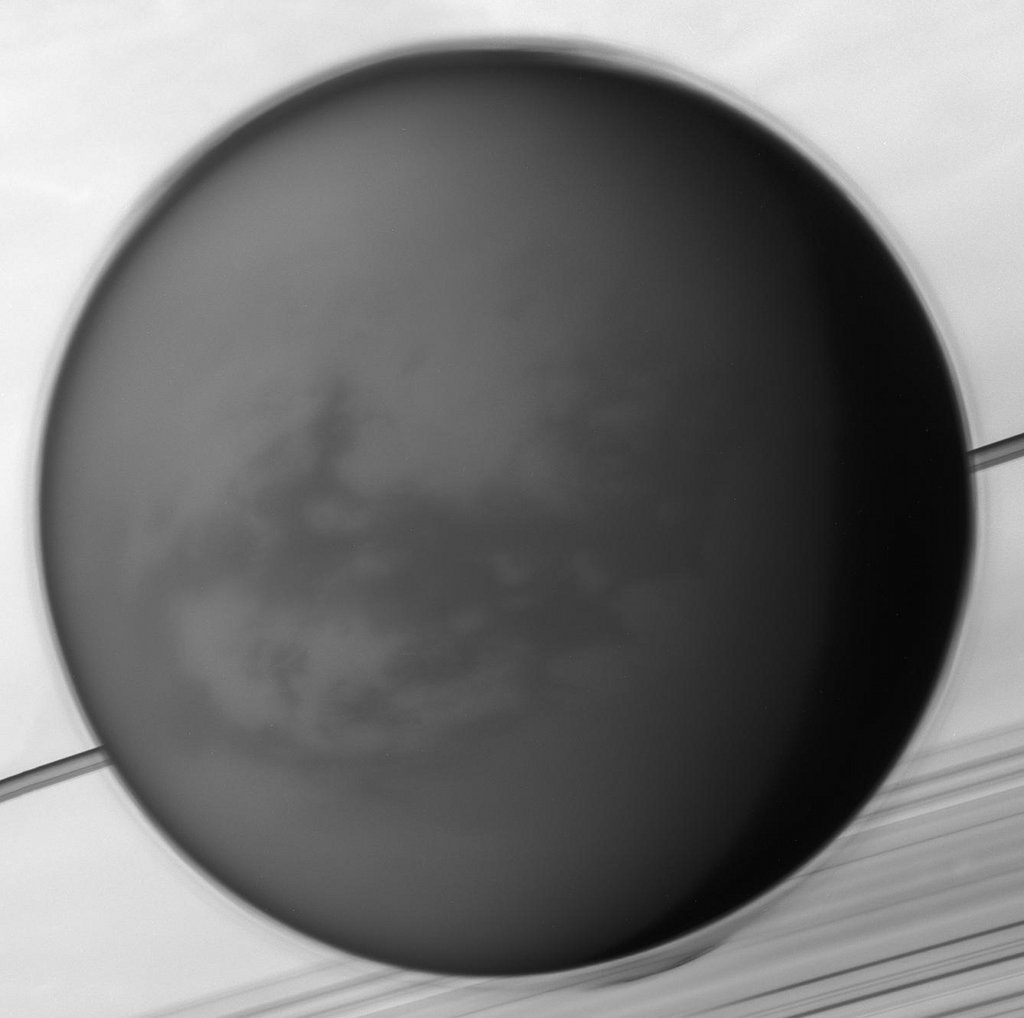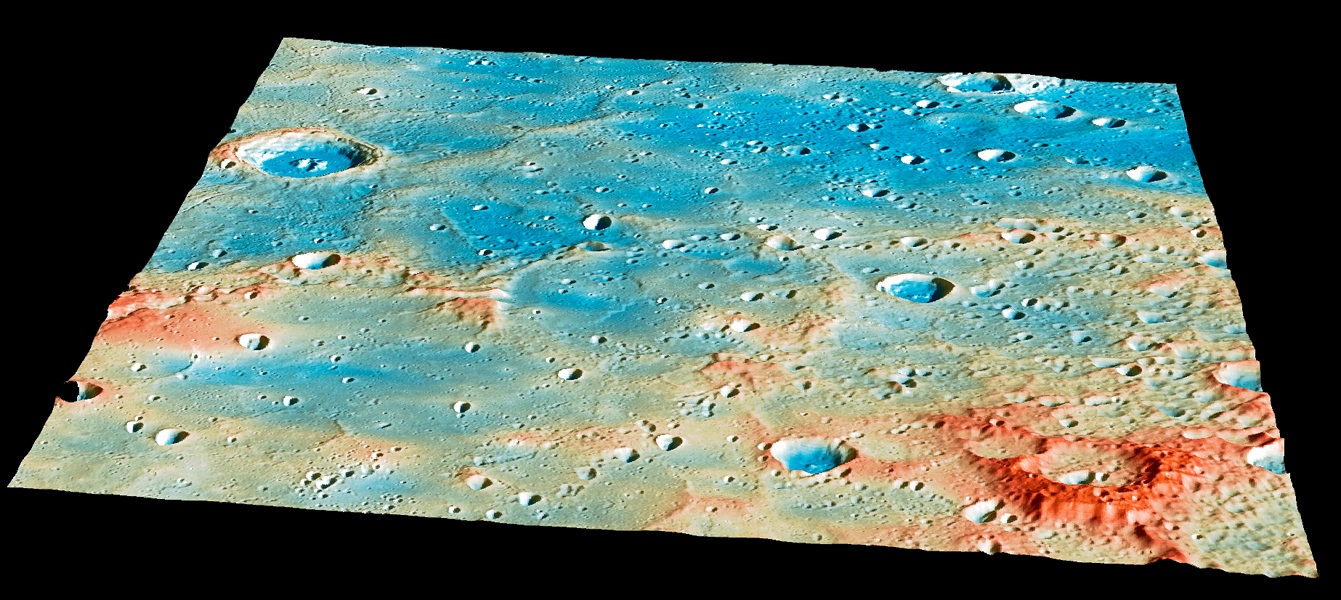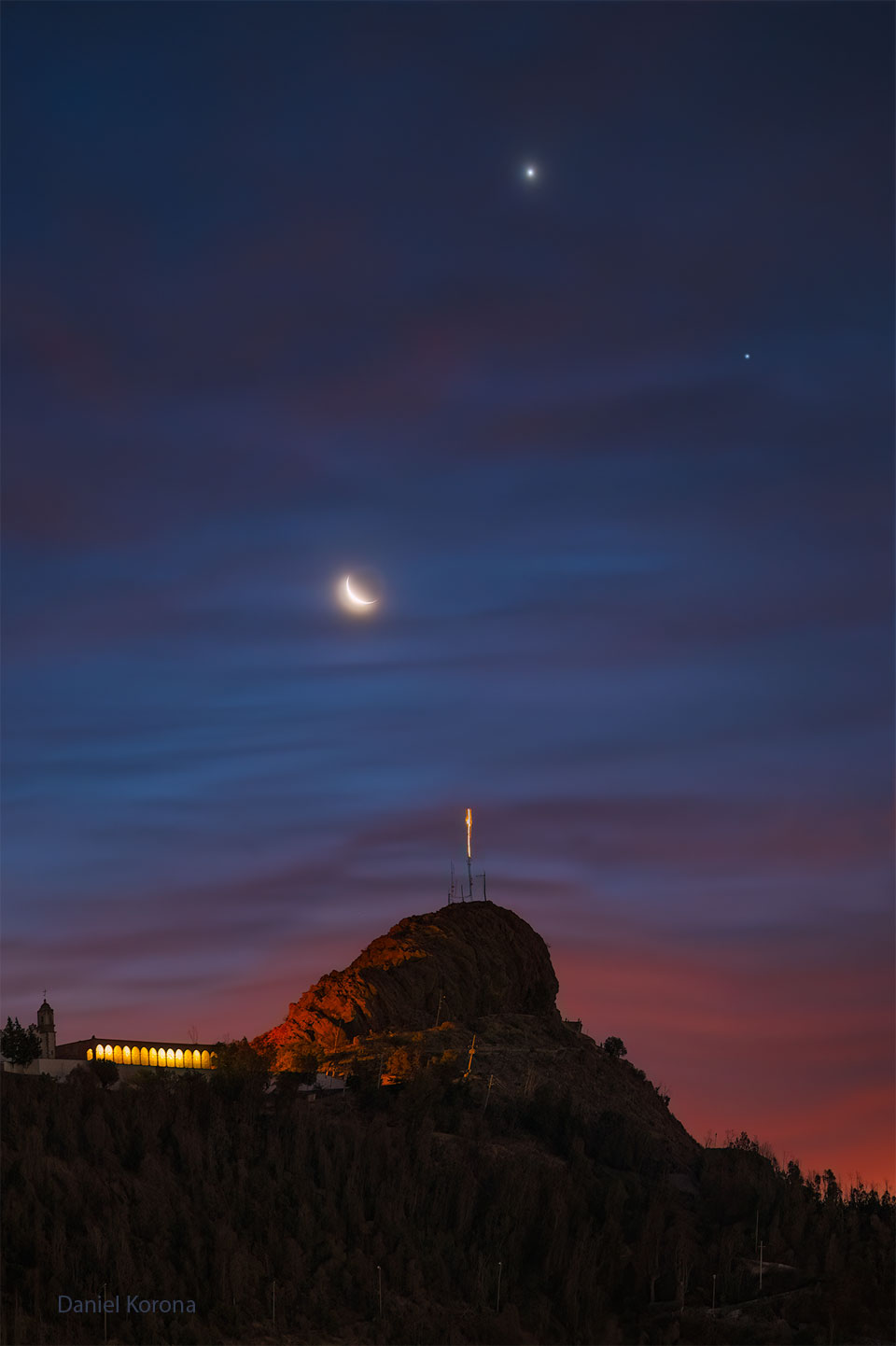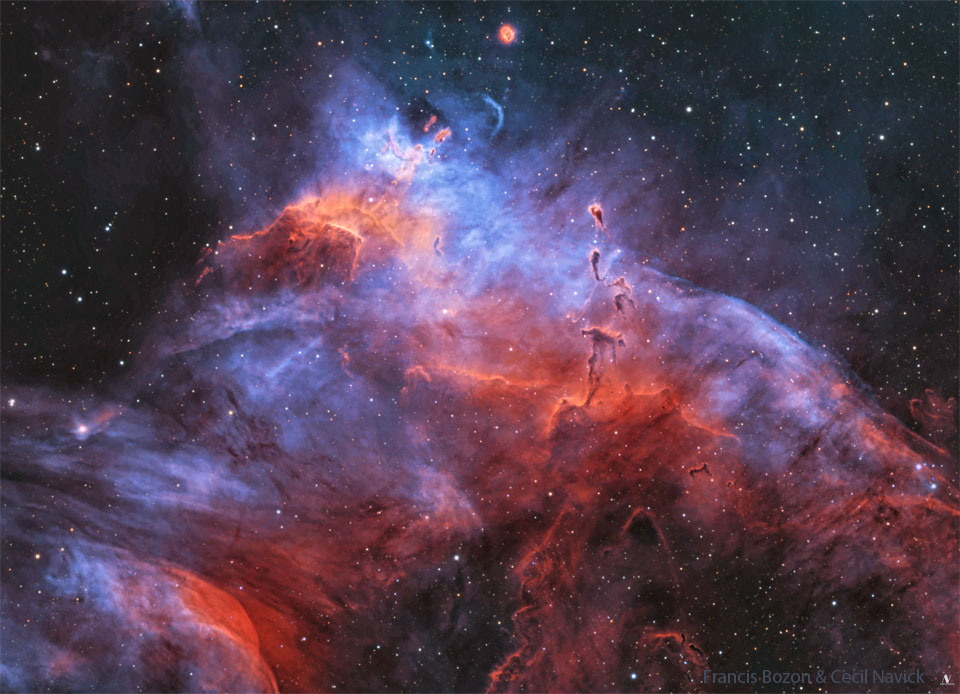
|
| Title: NASA pics | |
| Grapevine50sRoost > ~GENERAL~ > GENERAL DISCUSSION | Go to subcategory: |
| Author | Content |
|
zxxlyzq
|
|
|
Date Posted:09/03/2018 12:10 PMCopy HTML Composition and Processing: Robert Gendler Image Data: ESO, VISTA, HLA, Hubble Heritage Team (STScI/AURA) Explanation: Combined image data from the massive, ground-based VISTA telescope and the Hubble Space Telescope was used to create this wide perspective of the interstellar landscape surrounding the famous Horsehead Nebula. Captured at near-infrared wavelengths, the region's dusty molecular cloud sprawls across the scene that covers an angle about two-thirds the size of the Full Moon on the sky. Left to right the frame spans just over 10 light-years at the Horsehead's estimated distance of 1,600 light-years. Also known as Barnard 33, the still recognizable Horsehead Nebula stands at the upper right, the near-infrared glow of a dusty pillar topped with newborn stars. Below and left, the bright reflection nebula NGC 2023 is itself the illuminated environs of a hot young star. Obscuring clouds below the base of the Horsehead and on the outskirts of NGC 2023 show the tell-tale far red emission of energetic jets, known as Herbig-Haro objects, also associated with newborn stars. |
|
|
Rockymz
|
Share to:





 #271
#271
|
|
Re:NASA pics Date Posted:10/05/2025 8:18 AMCopy HTML Image Credit: Mars Pathfinder Mission, JPL, NASA Explanation: This picture from July 1997 shows a ramp from the Pathfinder lander, the Sojourner robot rover, deflated landing airbags, a couch, Barnacle Bill and Yogi Rock appear together in this 3D stereo view of the surface of Mars. Barnacle Bill is the rock just left of the house cat-sized, solar-paneled Sojourner. Yogi is the big friendly-looking boulder at top right. The "couch" is the angular rock shape visible near center on the horizon. Look at the image with red/blue glasses (or just hold a piece of clear red plastic over your left eye and blue or green over your right) to get the dramatic 3D perspective. The stereo view was recorded by the remarkable Imager for Mars Pathfinder (IMP) camera. The IMP had two optical paths for stereo imaging and ranging and was equipped with an array of color filters for spectral analysis. Operating as the first astronomical observatory on Mars, the IMP also recorded images of the Sun and Deimos, the smallest of Mars' two tiny moons. |
|
|
Rockymz
|
Share to:





 #272
#272
|
|
Re:NASA pics Date Posted:09/05/2025 8:28 AMCopy HTML Illustration Credit: NASA, Pablo Garcia Explanation: How do black holes create X-rays? Answering this long-standing question was significantly advanced recently with data taken by NASA’s IXPE satellite. X-rays cannot exit a black hole, but they can be created in the energetic environment nearby, in particular by a jet of particles moving outward. By observing X-ray light arriving from near the supermassive black hole at the center of galaxy BL Lac, called a blazar, it was discovered that these X-rays lacked significant polarization, which is expected when created more by energetic electrons than protons. In the featured artistic illustration, a powerful jet is depicted emanating from an orange-colored accretion disk circling the black hole. Understanding highly energetic processes across the universe helps humanity to understand similar processes that occur on or near our Earth. |
|
|
Megan57
|
Share to:





 #273
#273
|
|
Re:NASA pics Date Posted:09/05/2025 5:28 AMCopy HTML
|
|
|
Rockymz
|
Share to:





 #274
#274
|
|
Re:NASA pics Date Posted:08/05/2025 10:09 AMCopy HTML Image Credit: NASA, ESA, CSA, STScI; Jeff Hester (ASU), Allison Loll (ASU), Tea Temim (Princeton University) Explanation: Cataloged as M1, the Crab Nebula is the first on Charles Messier's famous list of things which are not comets. In fact, the Crab Nebula is now known to be a supernova remnant, an expanding cloud of debris from the death explosion of a massive star. The violent birth of the Crab was witnessed by astronomers in the year 1054. Roughly 10 light-years across, the nebula is still expanding at a rate of about 1,500 kilometers per second. You can see the expansion by comparing these sharp images from the Hubble Space Telescope and James Webb Space Telescope. The Crab's dynamic, fragmented filaments were captured in visible light by Hubble in 2005 and Webb in infrared light in 2023. This cosmic crustacean lies about 6,500 light-years away in the constellation Taurus. |
|
|
MarilynH
|
Share to:





 #275
#275
|
|
Re:NASA pics Date Posted:08/05/2025 9:07 AMCopy HTML That's magical Rocky . |
|
|
Megan57
|
Share to:





 #276
#276
|
|
Re:NASA pics Date Posted:08/05/2025 6:07 AMCopy HTML
|
|
|
Rockymz
|
Share to:





 #277
#277
|
|
Re:NASA pics Date Posted:07/05/2025 8:12 AMCopy HTML Image Credit & Copyright: Collaborative Astrophotography Team (CAT) Explanation: In the upper left corner, surrounded by blue arms and dotted with red nebulas, is spiral galaxy M81. In the lower right corner, marked by a light central line and surrounded by red glowing gas, is irregular galaxy M82. This stunning vista shows these two mammoth galaxies locked in gravitational combat, as they have been for the past billion years. The gravity from each galaxy dramatically affects the other during each hundred-million-year pass. Last go-round, M82's gravity likely raised density waves rippling around M81, resulting in the richness of M81's spiral arms. But M81 left M82 with violent star forming regions and colliding gas clouds so energetic the galaxy glows in X-rays. This big battle is seen from Earth through the faint glow of an Integrated Flux Nebula, a little studied complex of diffuse gas and dust clouds in our Milky Way Galaxy. In a few billion years, only one galaxy will remain. |
|
|
Megan57
|
Share to:





 #278
#278
|
|
Re:NASA pics Date Posted:07/05/2025 6:55 AMCopy HTML
|
|
|
Rockymz
|
Share to:





 #279
#279
|
|
Re:NASA pics Date Posted:06/05/2025 8:05 AMCopy HTML Image Credit: NASA, ESA, CSA, STScI, Klaus Pontoppidan (NASA-JPL), Joel Green (STScI) Explanation: Jets of material blasting from newborn stars, are captured in this James Webb Space Telescope close-up of the Serpens Nebula. The powerful protostellar outflows are bipolar, twin jets spewing in opposite directions. Their directions are perpendicular to accretion disks formed around the spinning, collapsing stellar infants. In the NIRcam image, the reddish color represents emission from molecular hydrogen and carbon monoxide produced as the jets collide with the surrounding gas and dust. The sharp image shows for the first time that individual outflows detected in the Serpens Nebula are generally aligned along the same direction. That result was expected, but has only now come into clear view with Webb's detailed exploration of the active young star-forming region. Brighter foreground stars exhibit Webb's characteristic diffraction spikes. At the Serpens Nebula's estimated distance of 1,300 light-years, this cosmic close-up frame is about 1 light-year across. |
|
|
Megan57
|
Share to:





 #280
#280
|
|
Re:NASA pics Date Posted:06/05/2025 6:45 AMCopy HTML
|
|
|
Rockymz
|
Share to:





 #281
#281
|
|
Re:NASA pics Date Posted:05/05/2025 8:42 AMCopy HTML Image Credit & Copyright: Jose Antonio Hervas Explanation: What’s causing those lines? Objects in the sky sometimes appear reflected as lines across water — but why? If the water’s surface is smooth, then reflected objects would appear similarly -- as spots. But if the water is choppy, then there are many places where light from the object can reflect off the water and still come to you -- and so together form, typically, a line. The same effect is frequently seen for the Sun just before sunset and just after sunrise. Pictured about 10 days ago in Ibiza, Spain, images of the setting Moon, Venus (top), and Saturn (right, faint) were captured both directly and in line-reflected forms from the Mediterranean Sea. The other bright object on the right with a water-reflected line is a beacon on a rock to warn passing boats. |
|
|
Megan57
|
Share to:





 #282
#282
|
|
Re:NASA pics Date Posted:05/05/2025 7:05 AMCopy HTML
|
|
|
Rockymz
|
Share to:





 #283
#283
|
|
Re:NASA pics Date Posted:04/05/2025 9:51 AMCopy HTML Illustration Credit: Robert Hurt, NASA/JPL-Caltech Explanation: How fast can a black hole spin? If any object made of regular matter spins too fast -- it breaks apart. But a black hole might not be able to break apart -- and its maximum spin rate is really unknown. Theorists usually model rapidly rotating black holes with the Kerr solution to Einstein's General Theory of Relativity, which predicts several amazing and unusual things. Perhaps its most easily testable prediction, though, is that matter entering a maximally rotating black hole should be last seen orbiting at near the speed of light, as seen from far away. This prediction was tested by NASA's NuSTAR and ESA's XMM satellites by observing the supermassive black hole at the center of spiral galaxy NGC 1365. The near light-speed limit was confirmed by measuring the heating and spectral line broadening of nuclear emissions at the inner edge of the surrounding accretion disk. Pictured here is an artist's illustration depicting an accretion disk of normal matter swirling around a black hole, with a jet emanating from the top. Since matter randomly falling into the black hol<a href="http://asterisk.apod.com/viewtopic.php?f=39&t=21666" e should not spin up a black hole this much, the NuSTAR and XMM measurements also validate the existence of the surrounding accretion disk. |
|
|
Megan57
|
Share to:





 #284
#284
|
|
Re:NASA pics Date Posted:04/05/2025 7:11 AMCopy HTML
|
|
|
Rockymz
|
Share to:





 #285
#285
|
|
Re:NASA pics Date Posted:03/05/2025 9:02 AMCopy HTML Image Credit: NASA, JPL-Caltech, Space Science Institute Explanation: Like Earth's moon, Saturn's largest moon Titan is locked in synchronous rotation with its planet. This mosaic of images recorded by the Cassini spacecraft in May of 2012 shows its anti-Saturn side, the side always facing away from the ringed gas giant. The only moon in the solar system with a dense atmosphere, Titan is the only solar system world besides Earth known to have standing bodies of liquid on its surface and an earthlike cycle of liquid rain and evaporation. Its high altitude layer of atmospheric haze is evident in the Cassini view of the 5,000 kilometer diameter moon over Saturn's rings and cloud tops. Near center is the dark dune-filled region known as Shangri-La. The Cassini-delivered Huygens probe rests below and left of center, after the most distant landing for a spacecraft from Earth. |
|
|
MarilynH
|
Share to:





 #286
#286
|
|
Re:NASA pics Date Posted:03/05/2025 8:06 AMCopy HTML That's magical Rocky . |
|
|
Megan57
|
Share to:





 #287
#287
|
|
Re:NASA pics Date Posted:03/05/2025 7:21 AMCopy HTML
|
|
|
Rockymz
|
Share to:





 #288
#288
|
|
Re:NASA pics Date Posted:02/05/2025 8:31 AMCopy HTML Science - NASA, ESA, CSA, Olivia C. Jones (UK ATC), Guido De Marchi (ESTEC), Margaret Meixner (USRA) Processing - Alyssa Pagan (STScI), Nolan Habel (USRA), Laura Lenkić (USRA), Laurie E. U. Chu (NASA Ames) Explanation: The most massive young star cluster in the Small Magellanic Cloud is NGC 346, embedded in our small satellite galaxy's largest star forming region some 210,000 light-years distant. Of course the massive stars of NGC 346 are short lived, but very energetic. Their winds and radiation sculpt the edges of the region's dusty molecular cloud triggering star-formation within. The star forming region also appears to contain a large population of infant stars. A mere 3 to 5 million years old and not yet burning hydrogen in their cores, the infant stars are strewn about the embedded star cluster. This spectacular infrared view of NGC 346 is from the James Webb Space Telescope's NIRcam. Emission from atomic hydrogen ionized by the massive stars' energetic radiation as well as molecular hydrogen and dust in the star-forming molecular cloud is detailed in pink and orange hues. Webb's sharp image of the young star-forming region spans 240 light-years at the distance of the Small Magellanic Cloud. |
|
|
Megan57
|
Share to:





 #289
#289
|
|
Re:NASA pics Date Posted:02/05/2025 6:33 AMCopy HTML
|
|
|
Rockymz
|
Share to:





 #290
#290
|
|
Re:NASA pics Date Posted:01/05/2025 8:16 AMCopy HTML Image Credit: NASA, Johns Hopkins Univ. APL, Arizona State Univ., CIW Explanation: The first to orbit inner planet Mercury, the MESSENGER spacecraft came to rest on this region of Mercury's surface on April 30, 2015. Constructed from MESSENGER image and laser altimeter data, the projected scene looks north over the northeastern rim of the broad, lava filled Shakespeare basin. The large, 48 kilometer (30 mile) wide crater Janacek is near the upper left edge. Terrain height is color coded with red regions about 3 kilometers above blue ones. MESSENGER'S final orbit was predicted to end near the center, with the spacecraft impacting the surface at nearly 4 kilometers per second (over 8,700 miles per hour) and creating a new crater about 16 meters (52 feet) in diameter. The impact on the far side of Mercury was not observed by telescopes, but confirmed when no signal was detected from the spacecraft given time to emerge from behind the planet. Launched in 2004, the MErcury Surface, Space ENvironment, GEochemisty and Ranging spacecraft completed over 4,000 orbits after reaching the Solar System's innermost planet in 2011. |
|
|
Megan57
|
Share to:





 #291
#291
|
|
Re:NASA pics Date Posted:01/05/2025 6:07 AMCopy HTML Amazing Rocky thank you |
|
|
Rockymz
|
Share to:





 #292
#292
|
|
Re:NASA pics Date Posted:30/04/2025 7:49 AMCopy HTML Image Credit & Copyright: Daniel Korona Explanation: Sometimes, the sky itself seems to smile. A few days ago, visible over much of the world, an unusual superposition of our Moon with the planets Venus and Saturn created just such an iconic facial expression. Specifically, a crescent Moon appeared to make a happy face on the night sky when paired with seemingly nearby planets. Pictured is the scene as it appeared over Zacatecas, México, with distinctive Bufa Hill in the foreground. On the far right and farthest in the distance is the planet Saturn. Significantly closer and visible to Saturn's upper left is Venus, the brightest planet on the sky. Just above the central horizon is Earth's Moon in a waning crescent phase. To create this gigantic icon, the crescent moon phase must be smiling in the correct direction. |
|
|
Megan57
|
Share to:





 #293
#293
|
|
Re:NASA pics Date Posted:30/04/2025 6:50 AMCopy HTML
|
|
|
DirtyDancer1957
|
Share to:





 #294
#294
|
|
Re:NASA pics Date Posted:29/04/2025 10:39 AMCopy HTML
|
|
|
Rockymz
|
Share to:





 #295
#295
|
|
Re:NASA pics Date Posted:29/04/2025 8:26 AMCopy HTML Image Credit & Copyright: Natan Fontes Explanation: Where are Saturn's ears? Galileo is credited, in 1610, as the first person to see Saturn's rings. Testing out Lipperhey's recently co-invented telescope, Galileo did not know what they were and so called them "ears". The mystery deepened in 1612, when Saturn's ears mysteriously disappeared. Today we know exactly what happened: from the perspective of the Earth, Saturn's rings had become too thin to see. The same drama plays out every 15 years because Saturn, like Earth, undergoes tilt-driven seasons. This means that as Saturn goes around the Sun, its equator and rings can tilt noticeably toward the Sun and inner Solar System, making them easily visible, but from other orbital locations will appear almost not at all. The featured picture from Brasilia, Brazil shows a modern version of this sequence: the top ring-dominated image was taken in 2020, while the bottom ring-obscure image taken earlier in 2025 |
|
|
Megan57
|
Share to:





 #296
#296
|
|
Re:NASA pics Date Posted:29/04/2025 6:12 AMCopy HTML
|
|
|
Rockymz
|
Share to:





 #297
#297
|
|
Re:NASA pics Date Posted:28/04/2025 8:19 AMCopy HTML Image Credit & Copyright: Francis Bozon & Cecil Navick (AstroA. R. O.) Explanation: This cosmic skyscape features glowing gas and dark dust clouds alongside the young stars of NGC 3572. A beautiful emission nebula and star cluster, it sails far southern skies within the nautical constellation Carina. Stars from NGC 3572 are toward top center in the telescopic frame that would measure about 100 light-years across at the cluster's estimated distance of 9,000 light-years. The visible interstellar gas and dust, shown in colors of the Hubble palette, is part of the star cluster's natal molecular cloud, itself cataloged as Gum 37. Dense streamers of material within the nebula, eroded by stellar winds and radiation, clearly trail away from the energetic young stars. They are likely sites of ongoing star formation with shapes reminiscent of the Tadpoles of IC 410 -- better known to northern skygazers. In the coming tens to hundreds of millions of years, gas and stars in the cluster will be dispersed though, by gravitational tides and by violent supernova explosions that end the short lives of the massive cluster stars. |
|
|
Megan57
|
Share to:





 #298
#298
|
|
Re:NASA pics Date Posted:28/04/2025 6:19 AMCopy HTML
|
|
|
Rockymz
|
Share to:





 #299
#299
|
|
Re:NASA pics Date Posted:27/04/2025 8:42 AMCopy HTML Image Credit: NASA, ESA, and the Hubble Heritage Team (STScI/AURA); Acknowledgement: R. Sahai (JPL) et al. Explanation: What is creating the strange texture of IC 418? Dubbed the Spirograph Nebula for its resemblance to drawings from a cyclical drawing tool, planetary nebula IC 418 shows patterns that are not well understood. Perhaps they are related to chaotic winds from the variable central star, which changes brightness unpredictably in just a few hours. By contrast, evidence indicates that only a few million years ago, IC 418 was probably a well-understood star similar to our Sun. Only a few thousand years ago, IC 418 was probably a common red giant star. Since running out of nuclear fuel, though, the outer envelope has begun expanding outward leaving a hot remnant core destined to become a white-dwarf star, visible in the image center. The light from the central core excites surrounding atoms in the nebula causing them to glow. IC 418 lies about 2000 light-years away and spans 0.3 light-years across. This false-color image taken from the Hubble Space Telescope reveals the unusual details. |
|
|
Megan57
|
Share to:





 #300
#300
|
|
Re:NASA pics Date Posted:26/04/2025 5:19 PMCopy HTML
|





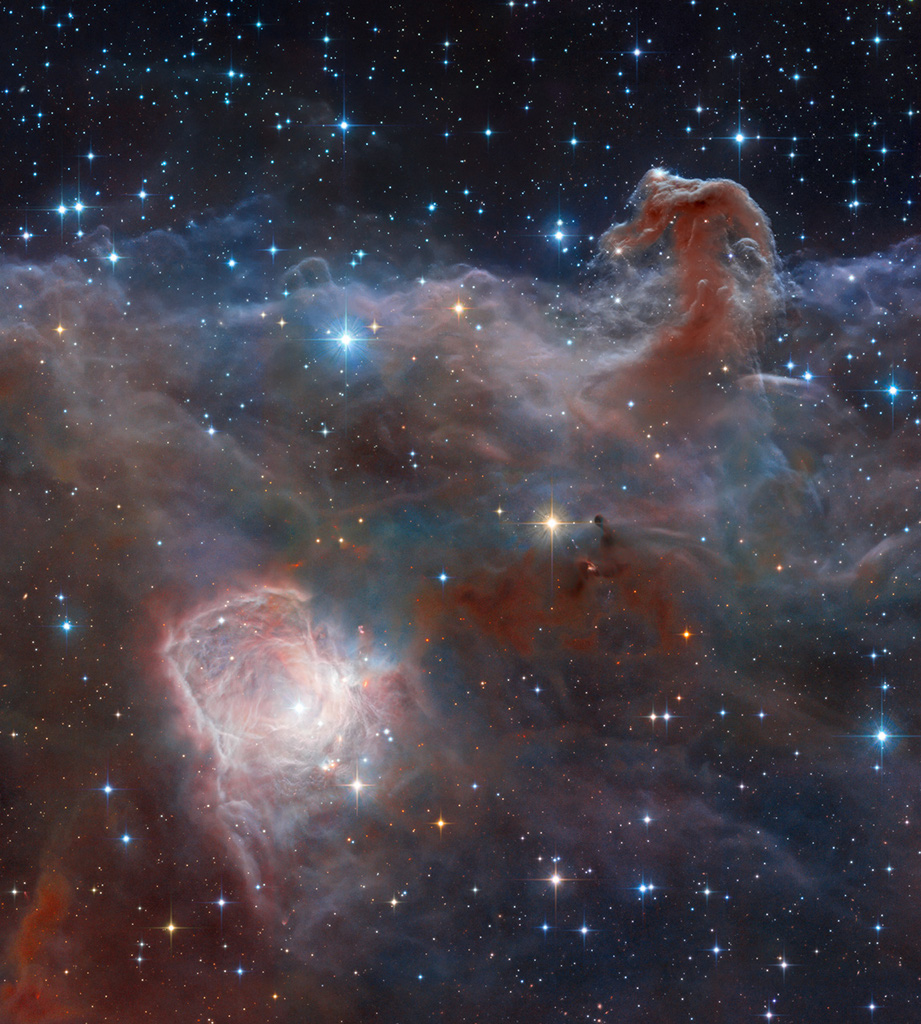










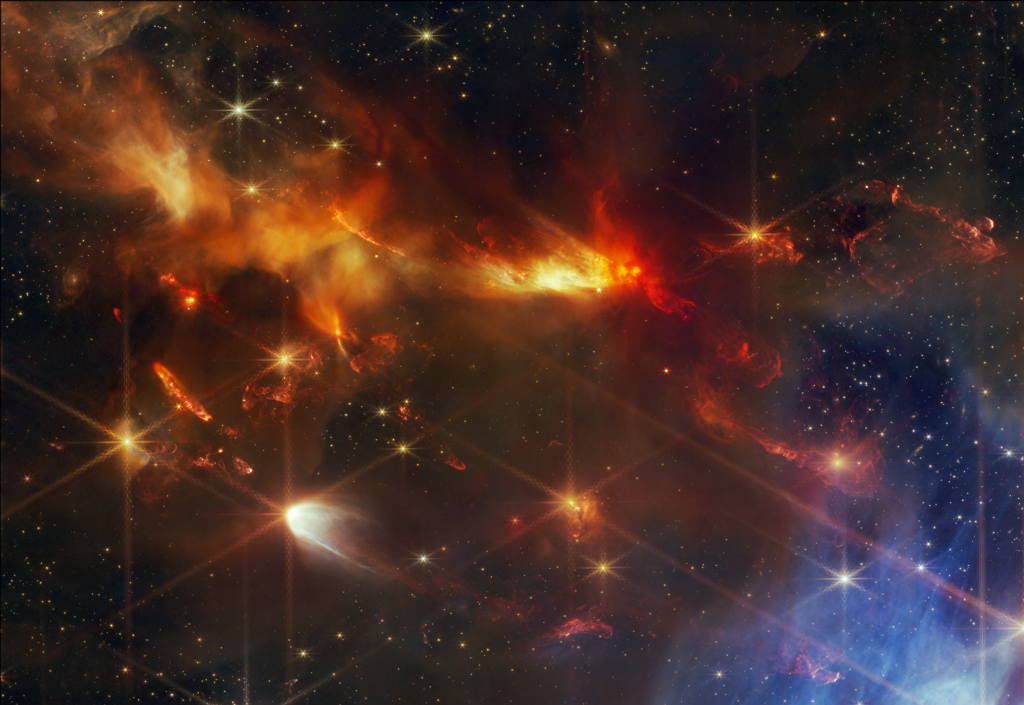


 thanks Rocky
thanks Rocky 

